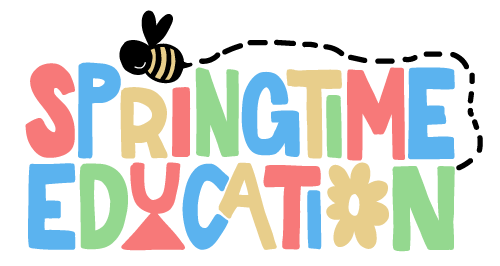Inclusive classrooms empower every student to thrive, regardless of their abilities or learning styles. But how can educators create an environment that truly supports all learners? Here are practical strategies and tools to make inclusion seamless.
1. Visual Learning Support
Why It Matters: Visual aids help students grasp concepts and bridge communication gaps.
Quick Tips:
- Use flashcards (like Springtime Education’s Sign Language Flashcards) to teach vocabulary and basic communication.
- Display educational posters that reinforce concepts, such as the sign language alphabet.
- Introduce visual schedules to guide routines and reduce anxiety.
Tactile Element:
Pair the use of flashcards with performing the signs as a group activity. This not only reinforces visual learning but also engages students physically, helping them remember the signs through movement.
2. Multi-Sensory Learning Approaches
Why It Matters: Engaging multiple senses enhances learning for all students.
Quick Tips:
- Create hands-on learning stations with magnets for spelling or math activities.
- Pair visual aids with sounds or movement-based activities for better retention.
- Use tactile tools to encourage exploration and interaction.
Tactile Element:
During sign language lessons, encourage students to practice signing while saying the word aloud. For example, when teaching colours, students can use magnets to spell the colour name while simultaneously performing the sign.
3. Communication Support Strategies
Why It Matters: Effective communication is essential for inclusion.
Quick Tips:
- Teach basic sign language using flashcards to support non-verbal students.
- Set up visual communication boards with images or symbols for easy interaction.
- Foster group activities where students collaborate and communicate.
Tactile Element:
Incorporate interactive sign language games, such as “sign and guess,” where students perform a sign, and their peers guess the word. This encourages active participation and builds confidence in using signs.
4. Accessible Learning Materials
Why It Matters: Accessible materials ensure all students can engage with lessons.
Quick Tips:
- Adapt worksheets with larger fonts or color-coded instructions.
- Provide ebooks for students who benefit from digital or audio formats.
- Use clear visuals and step-by-step guides in lessons.
Tactile Element:
When using ebooks, pair them with hands-on signing activities. For example, while reading a story, pause to sign key words, encouraging students to follow along.
5. Building a Culture of Empathy
Why It Matters: Empathy fosters respect and understanding in the classroom.
Quick Tips:
- Host discussions about diversity and inclusion using age-appropriate stories.
- Celebrate cultural events and differences to promote acceptance.
- Encourage peer mentoring to build collaboration and mutual respect.
Tactile Element:
Create a “Sign of the Day” activity where students learn and practice one new sign together, such as “friend” or “thank you.” This fosters a sense of community and inclusion.
Inclusive classrooms are achievable with the right strategies and tools. By combining visual aids, multi-sensory activities, and tactile elements, educators can create an environment where every child thrives. Springtime Education’s products, like flash cards, posters, and magnets, make inclusion practical and engaging. Start building your inclusive classroom today—visit our website for tools and inspiration!

